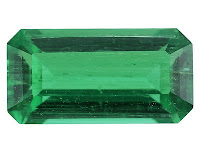Japan's akoya pearl industry, which began in the 1890s when Kokichi Mikimoto created the world's first cultured pearls, is facing collapse due to plunging sales and stiff competition from China. In the small fishing town of Wagu, on central Japan's Ago bay, about half of the 45 akoya pearl growers are about to close down their pearl beds after prices halved this year, sending them even deeper into the red. "It's the end if you lose your passion for the work you do -- and I'm losing it," said Akihiro Takeuchi, 43, one cultivator of Japan's renowned akoya cultured pearls. "We can't live like this. It's really unprofitable ... Akoya may die out completely in this town in a few years."
.
Saltwater akoya oyster pearls have long been a benchmark of quality in the industry, with domestic production peaking at 88.5 billion yen ($900 million) in 1990. But by 2008, output had fallen to one-fifth of that. First, a "red tide" of deadly phytoplankton washed in each year in the mid-1990s, killing two-thirds of the country's akoya oysters. Then the market was flooded with less expensive Chinese freshwater pearls. At the same time, young people's tastes have shifted to more casual accessories. Now the current recession -- the country's deepest in decades -- could be the last straw. Loss-making jeweler Tasaki Pearl has closed seven of its eight pearl farms in Japan this year, and U.S. upscale retailer Tiffany & Co has announced plans to end its pearl-only store outlets. In Wagu, young growers have already drifted away, while their elders see little hope of survival after this year's open tender, which was delayed by a month, resulted in a 50 percent drop in prices.
.
"Those who can quit are lucky, but many can't because they've got bank debts from the past," said Makoto Yamamoto, president of the Pearl Cultivation Fishery Union in Mie, where one-third of Japanese akoya pearls are produced. "I was always optimistic in the past, even when we had the red tide, but this time I've got no ideas," the 74-year-old veteran said in an interview
.
SEEKING SURVIVAL
Chinese growers have succeeded in cultivating freshwater pearls as big and round as akoya and have been exporting them since the 1990s. Unlike akoya oysters, which can yield a few pearls, a single freshwater mussel can produce as many as 40. China now has 50 times Japan's pearl production capacity and the pearls are much more price-competitive, according to Mikimoto director Takashi Shimokura. There is also more competition now from South Sea and Tahitian pearls which are often bigger than akoya, attracting consumers especially in many western countries. Japan's global exports of cultured pearls have tumbled 60 percent over the last 25 years, and the country currently imports more than double the amount of pearls it exports.
Since last autumn, the country's retailers have seen falls in sales of up to 40 percent at home and 70 percent overseas, a document they submitted when seeking government support showed.
The Japanese government unveiled in late May a 120 billion yen emergency package for small fishery companies as part of a supplementary budget. But that alone won't help, said lower house member Norio Mitsuya, who also sits on parliament's Pearl Promotionary Group. "They (pearl industry) must come up with more innovative ideas. Whining about competition won't change the situation because we can't stop the imports," said Mitsuya. "For survival, the industry as a whole must seriously consider to whom they want to sell and how," he added.
.
Akoya pearl producers and retailers agree that they need to raise public awareness about the quality of their products. "Not many people know the difference between saltwater and freshwater pearls and that the chance of cultivating a top-class akoya pearl is so small -- less than 1 percent," said Yoshimasa Ohata, president of Ohata Pearl Industry, a pearl processor that also owns oyster beds in Ago Bay. Ohata said an increasing number of pearl stores, especially those on the Internet, are selling freshwater pearls without clear explanations of their origin as they can be sold at lower prices. In an ominous sign, even the company that first gave the world the akoya pearl now appears ambiguous about its future. "As the originator of akoya pearls, we do feel responsible for akoya, but there are also high-quality South Sea pearls," Mikimoto and Co's Shimokura said. "We want to keep providing customers with high-quality jewelry, whether it's akoya, South Sea pearls or diamonds."
.
.
Partial reprint of a Reuters News Article and AGTA story..












